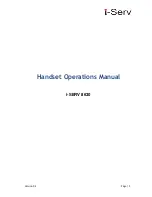
QTS-6000 Series
Analog Transmitter/Sensor
B71050-021-000-RB.doc
ELECTROCHEMICAL TRANSMITTER
JUL. 18, 2007
PRODUCT MANUAL
8
NOTE:
Avoid mounting the electronics near 600 VAC switchgear and other sources of radio
frequency and/or electromagnetic interference. While RFI/EMI protection is built-
in to the electronics, excessive levels of interference may cause instability in the output
signal.
There are two mounting holes in the back of the ABS plastic enclosures for surface mounting. These holes
will line up with standard electrical junction boxes. There are two tabbed mounting holes on the exterior of
the industrial explosion-proof enclosure for surface mounting. See the appropriate installation drawing for
dimensional details.
*WARNING* When mounted where the unit will be subjected to rain or other water environments,
all conduit connections must be properly sealed with duct seal or equivalent material.
Failure to do this could result in water inside the enclosure, which will cause a
terminal failure of the electronics.
5.2 Wiring
The QTS-6100 Series Sensor/Transmitter is a low
power consumption transmitter requiring only two
wires for power and signal. Terminal block
connections are provided for wiring that will accept
wire from 14 to 24 AWG. See the appropriate
installation drawing for wiring terminal connection
details. The transmitter electronics will work over a
power range of 12 to 36 VDC. The resistance of the
load that the 4 to 20 mA DC output can be driven into
is relative to the voltage available at the transmitter
(see Figure 4). When calculating power supply
requirements, all loads on the transmitter need to be
totaled, including wiring and any accessory devices
such as intrinsic safety barriers.
*CAUTION*
GROUNDING - The industrial
explosion-proof metal enclosure must be connected to a safety ground, either locally
or back at the monitor, in order to provide immunity to Electromagnetic
Interference.
1 2 1 8 2 4 3 0 3 6
V o lta g e S u p p l y ( V D C )
7 5 0
5 0 0
2 5 0
0
1 0 0 0
1 2 5 0
1 5 0 0
Figure 4 - Maximum Burden Resistance









































